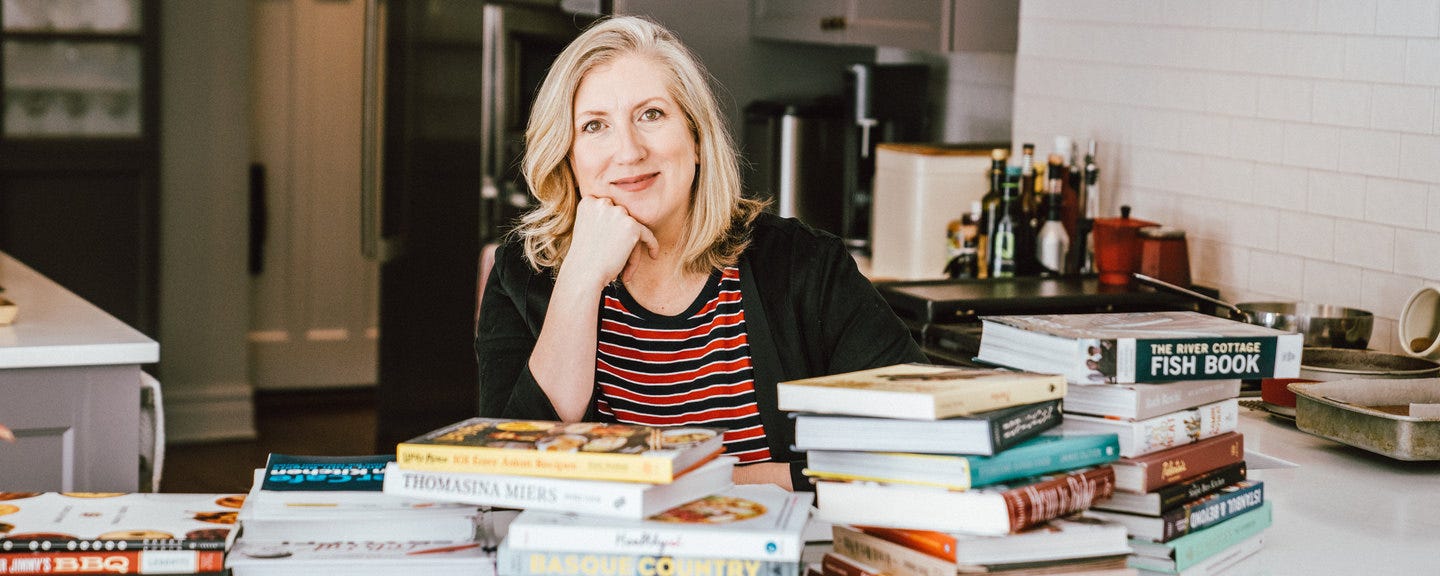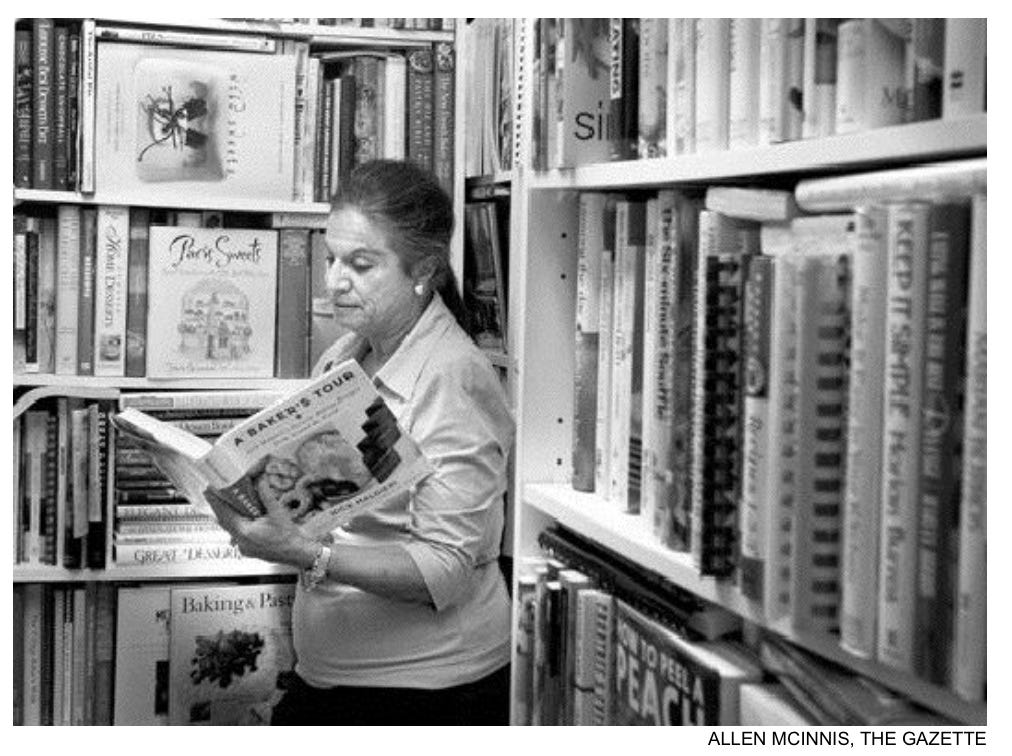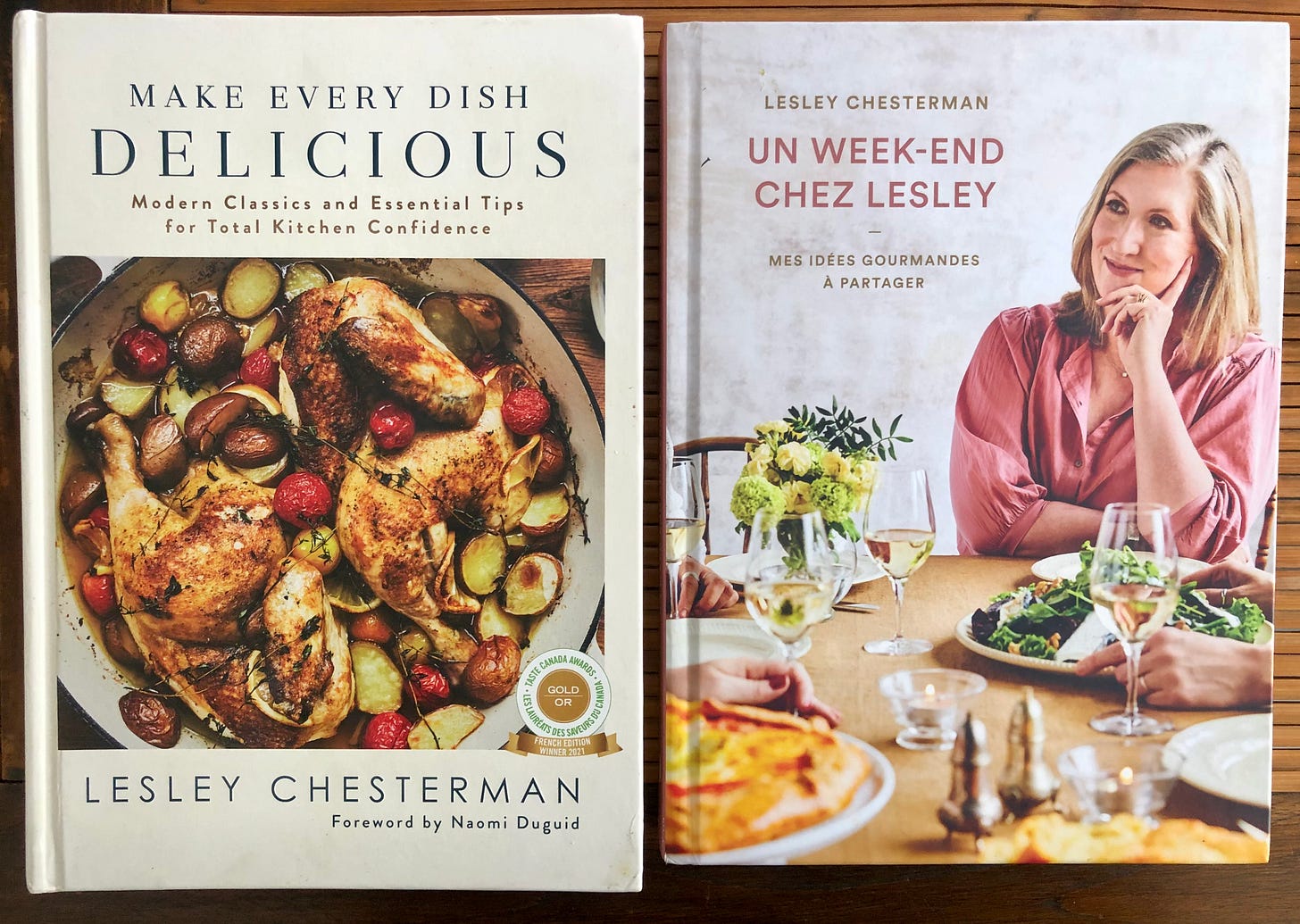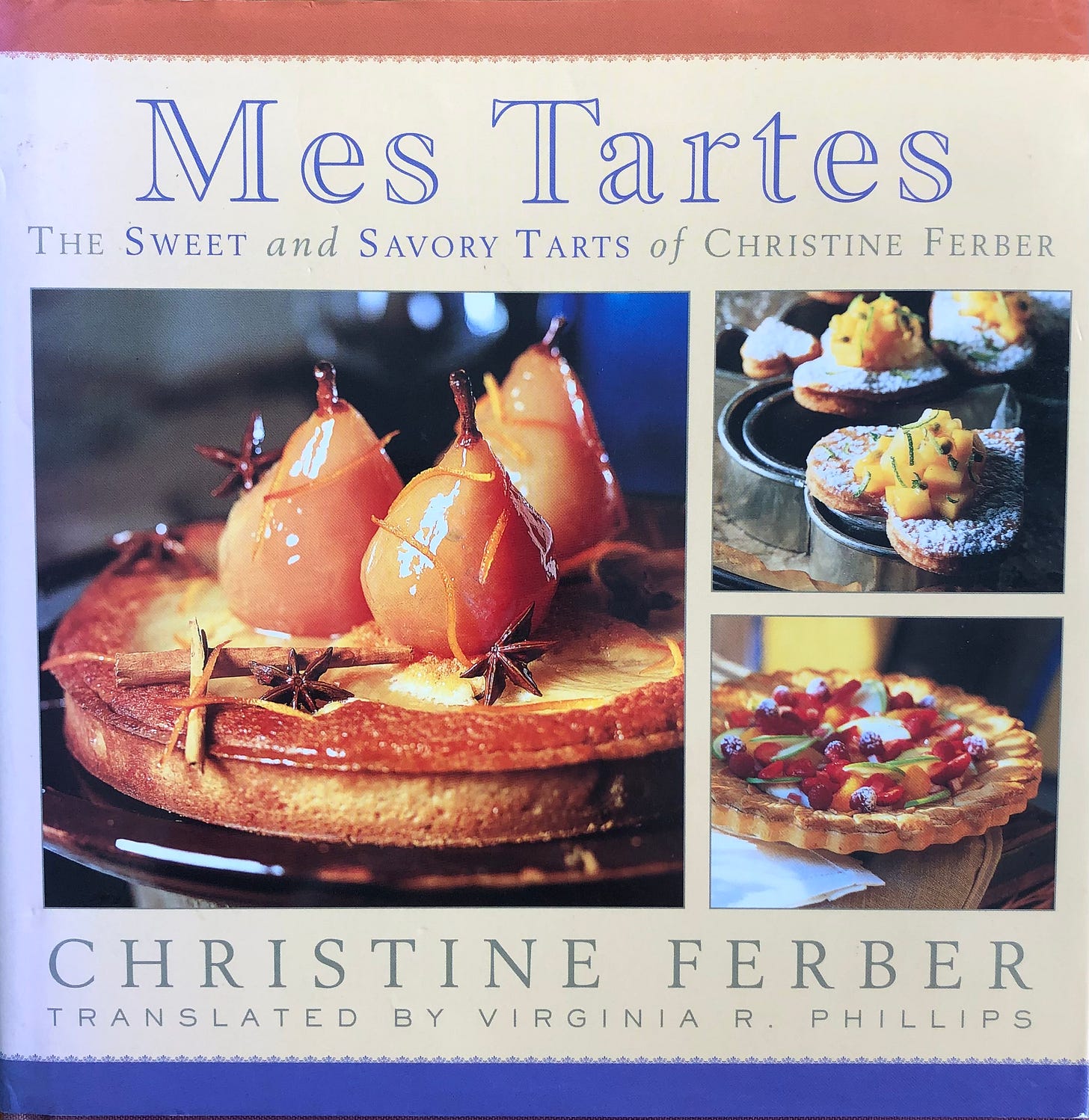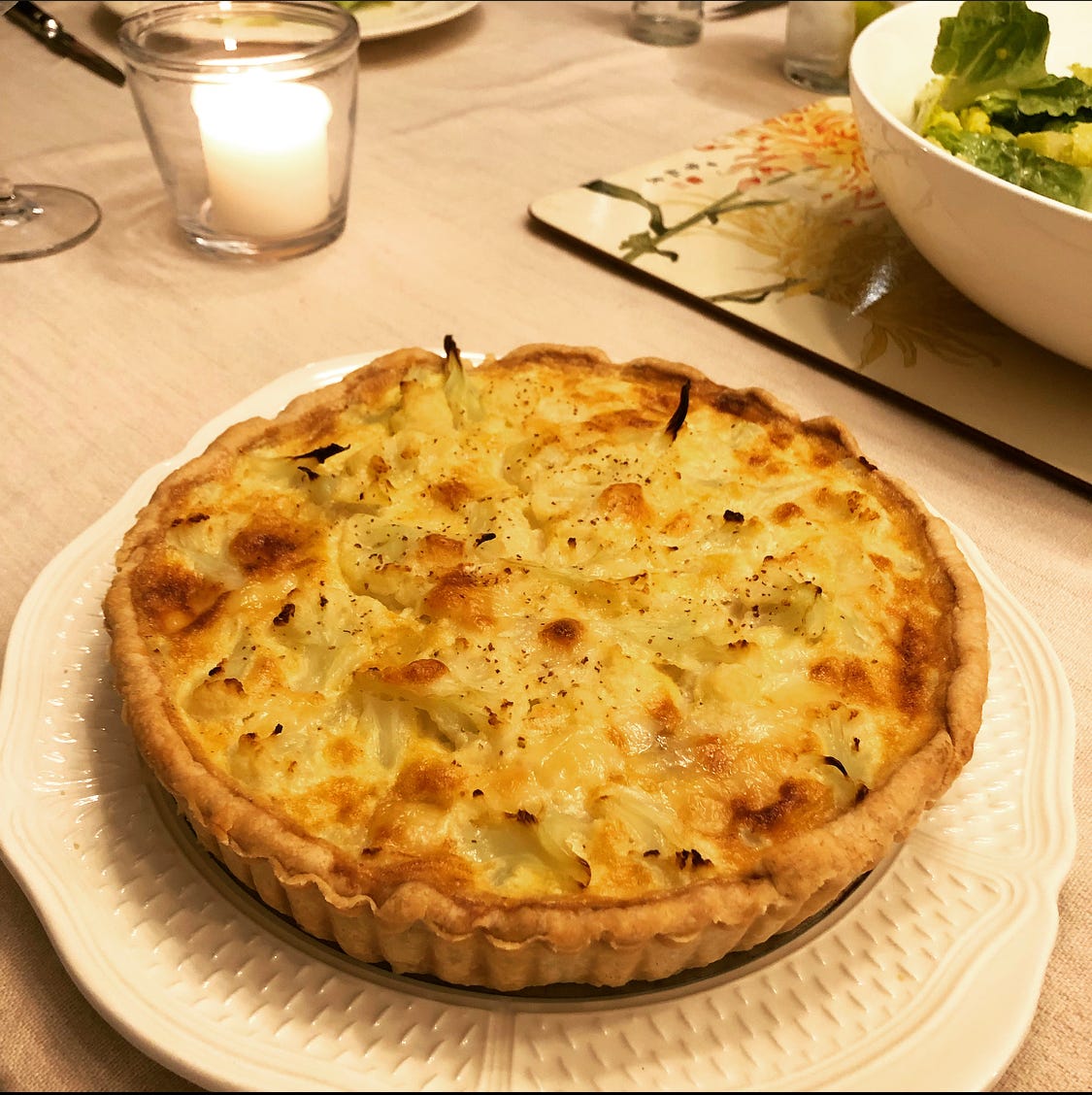In my house, my favourite place to read and work is in a sitting room lined with cookbooks. At last count, some 700 are crowding those shelves. I’d estimate half are pastry and baking books. A few shelves are devoted to French cookbooks written in French, a few more to French cookbooks written in English, and there’s even a shelf devoted to French cookbooks written by English chefs. There are Asian cookbooks, Nordic cookbooks, Mexican cookbooks, American cookbooks, many British cookbooks, chef cookbooks, old cookbooks, and friends cookbooks.
In a storage room in my basement, I have Gourmet magazines dating back from the the seventies to the last issues in 2009, along with most every issue of Martha Stewart Living, Fine Cooking, Cook’s Illustrated, Saveur and countless issues of Elle à Table, Thuriès Magazine, Bon Appétit and more.
But I guess that’s not sufficient because on Instagram, I follow dozens of brilliant content providers posting recipes for incredibly attractive dishes. And then there are people here on Substack (like yours truly) feeding the beast with even more new ways to roast cherry tomatoes, fill pies, dress salads, frost cakes, flavour risottos and so on. YouTube is now on regular rotation for new recipe ideas (not all of them great, mind you…) and just as I was writing these words, a pop up came onto my screen from the New York Times cooking app with suggestions of recipes to cook this week.
With an abundance of recipes on my to-try list, I’ve limited my intake of new cookbooks, but just the other day at a doctor’s office, when no one was looking, I ripped a recipe out of an old Coup de Pouce magazine for a caramel chocolate tart — like I don’t already have a dozen recipes for caramel chocolate tarts!
I will probably be stockpiling cookbooks until I’m trapped in a maze of them, with dozens of Purolator boxes piled up by the front door. Heard of cat ladies? I’ll be the cat and cookbook lady. Oh and I haven’t even mentioned my obsession with out-of-print cookbooks. Alain Chapel may have passed away in 1989, but that didn’t stop me from recently acquiring his cookbook, ironically called, La cuisine c'est beaucoup plus que des recettes!
Mercifully, I am not the only cookbook obsessive out there. Like many other food writers, I consider it much-needed reference library. And as large as my collection happens to be, have a look at the awesome libraries of Nigella Lawson (with 3,886 titles) and Diana Henry, (with a whopping 4,000!)
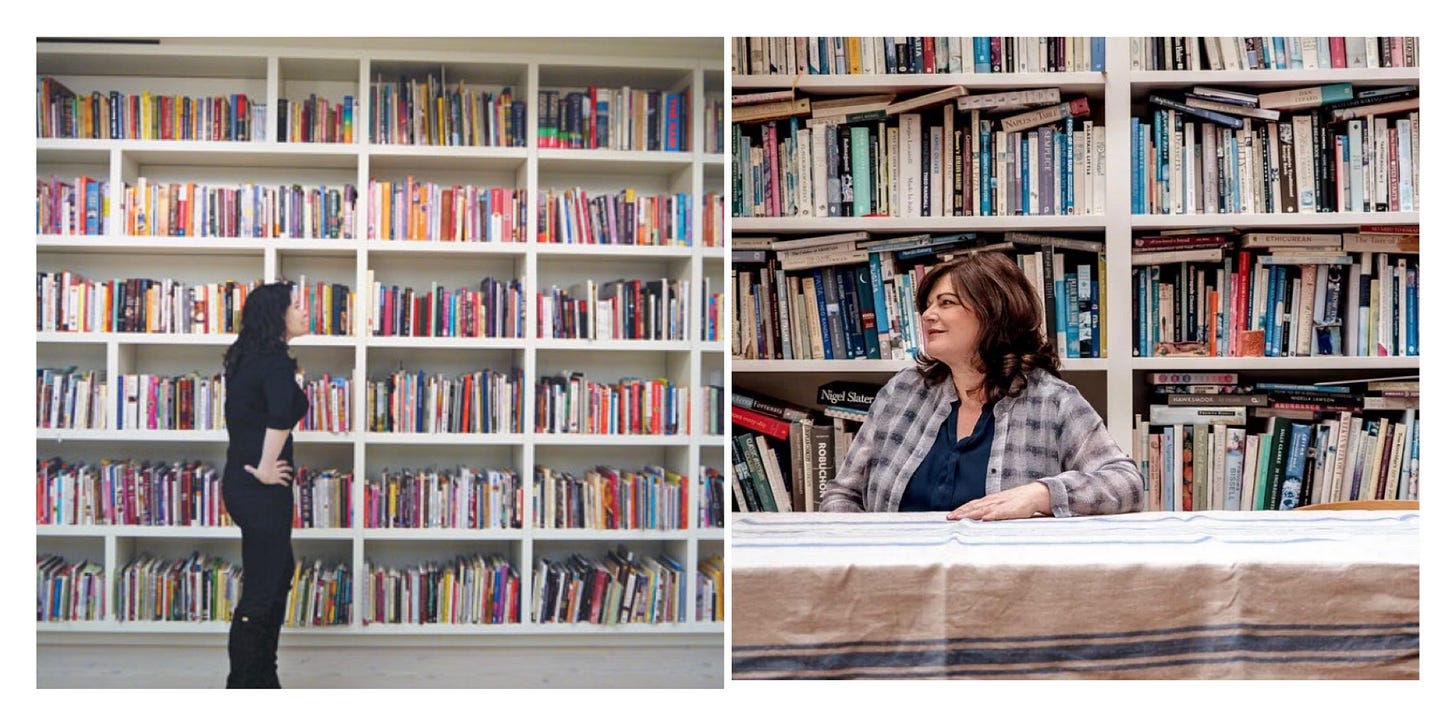
Of course cookbook authors are not alone in their cookbook (hoarding) collecting habits. In 2006 I wrote about Sue Carol Isaacson, a Montrealer whose cookbook collection was so voluminous (over 4,000 volumes) that she added an extension to her kitchen to accommodate them all. Here are a few quotes from that Q&A:
LC: How do you manage your collection?
SCI: I group the books by different categories, like bread, chocolate, Greek or international. I have a hand-written list of them all, which I intend to put on the computer sooner or later.
Did you have to build an extra wing in your house to make room for your collection?
Almost! I extended the kitchen just for my library. If I could go next door, I would!
How did you end up with so many?
I'm a collector. Collectors collect. I also have quite a collection of art books. It's cheaper than collecting husbands.
Do you give any books away?
No. I don't even like to lend them
What does your husband think of having 4,000 books in the house?
He asks me why, with all those books, he still has to order out pizza!
I often wonder how many cookbooks Sue Carol is up to today.
I also wonder why people are specifically drawn to certain cookbooks: to learn how to cook?, to try new things?, to recreate dishes from their favourite restaurants? because they trust and admire the author? All of the above. But I’m sure many reach for a cookbook to admire the pictures, dream of one day making a dish, and eventually filing the book away for later use, which often never happens. I’m certainly guilty of that, and cannot deny that I haven’t tried more than a couple of recipes from the majority of the cookbooks that I own. And in some cases… none at all! Truth be told, the cookbooks I use the most are my most recent English and French books.
I’m wondering how many books you have and what are your faves?
For cookbook authors a minimum amount of cookbook hoarding is essential to keep track of food trends and have a base of resources to create something new and hopefully… better. That said, some recipes cannot really be bettered. I recently tested a “new” recipe for pâte brisée and halfway through I realized it was exactly like the one I always use. So many so-called “new” recipes are really just slight variations on classics. Case in point: Maida Heatter’s carrot cake recipe that I have on good authority has been ripped off countless times by some pretty big names in the industry.
Recipe plagiarism and appropriation is rampant, with many recipe writers continuously seeing their words and ideas lifted with little-to-nothing in the way of credit. I wrote about that for the Montreal Gazette back in 2015. Yet so careful are some cookbook authors today about accusations of plagiarism that I know of a few who actively avoid reading other writer’s books in fear of inadvertently recycling their ideas.
With so many resources today churning out recipes, inevitably we’ll be turning around in circles of sameness. A welcome result of this recipe tsunami is that less focused on European recipes and we’re more open to low-sugar, low-fat, vegan and gluten-free options. Slow-cooker, air-fryer and Instapot users are also well served. Another seismic change is that recipes have leapt from the page to the screen. I’m not sure how often viewers will get cookin’, but the format has never made food more tempting nor really, more entertaining.
From all of my cookbooks, I’m often drawn to names that I admire and for that reason, Christine Ferber’s recipes are some of my favourites. Years ago I was asked to review her book 'Mes Tartes: the Sweet and Savory Tarts of Christine Ferber,” For The Art of Eating magazine, and alas, I found several mistakes while testing — not surprising as it is a translation from the French book and cookbooks from France are poorly edited and rarely reliable.
So now I use the books for ideas, and adapt the recipes as needed, taking into consideration ingredients and equipment. Here is my version of her recipe — yet another to add to your repertoire.
Cauliflower Tart with Mustard Seed
Serves 6
This recipe resembles a quiche, yet there is more cheese and cauliflower in the filling than egg and cream. For a less dense tart, simply reduce the amount of cauliflower.
Keep reading with a 7-day free trial
Subscribe to Lick my Plate to keep reading this post and get 7 days of free access to the full post archives.




